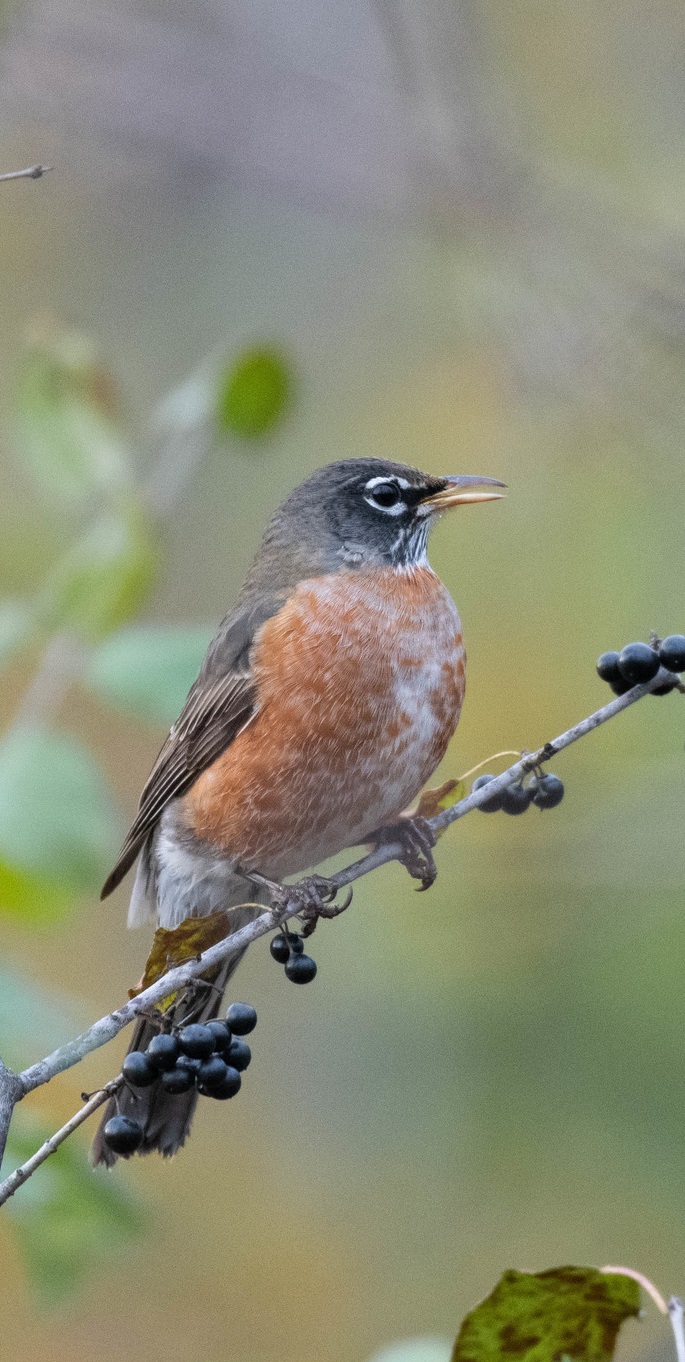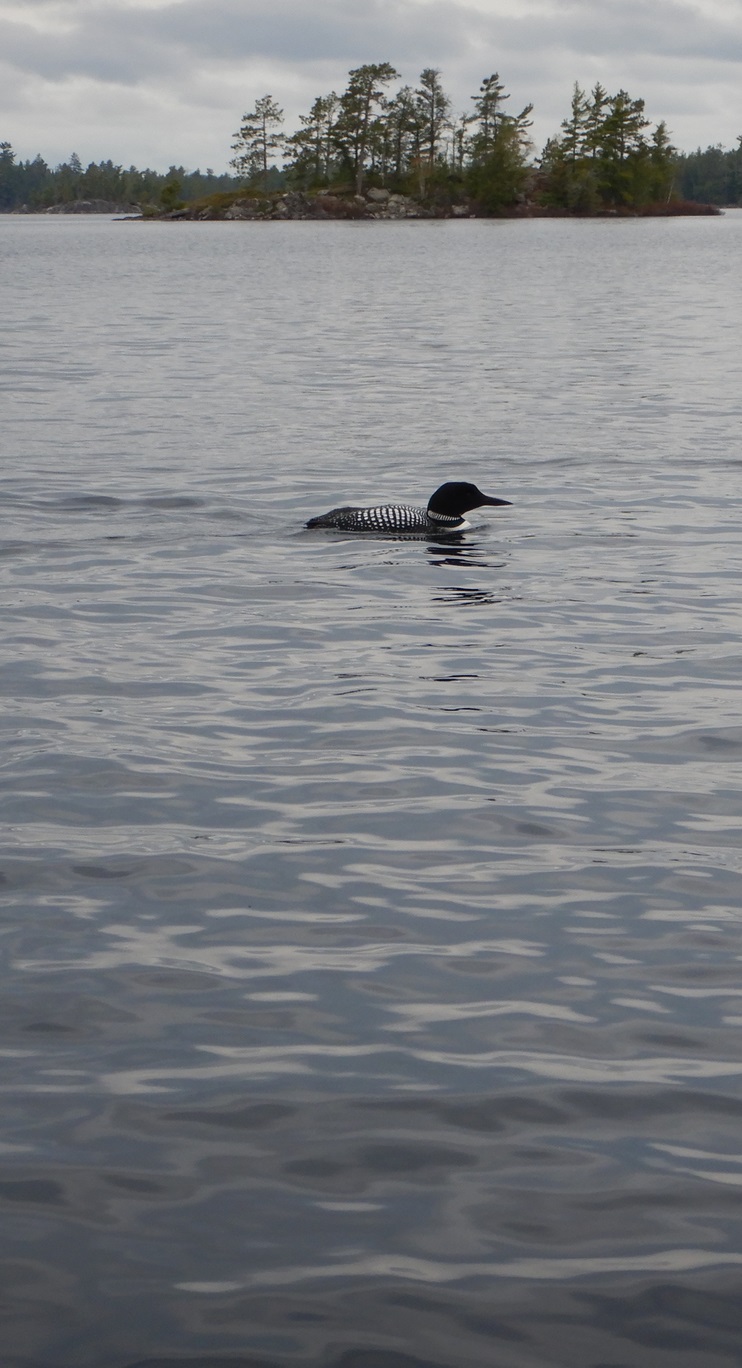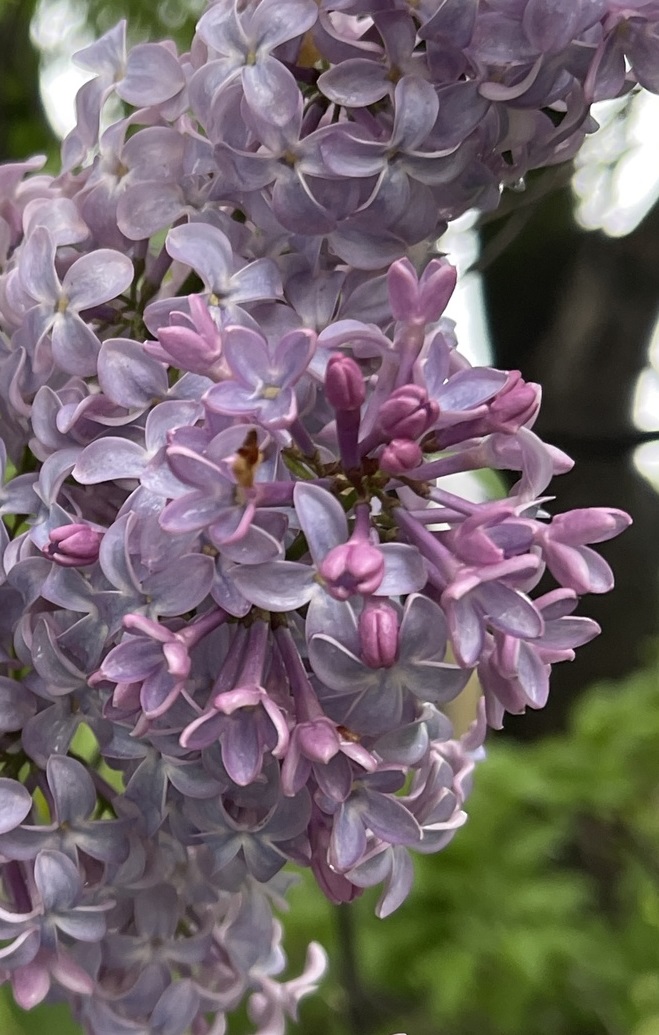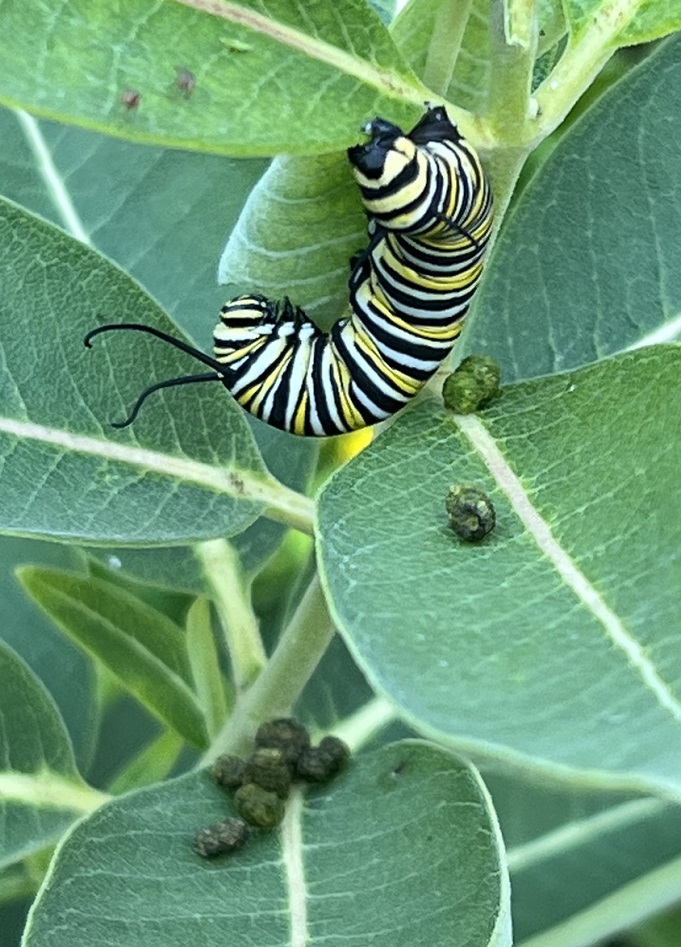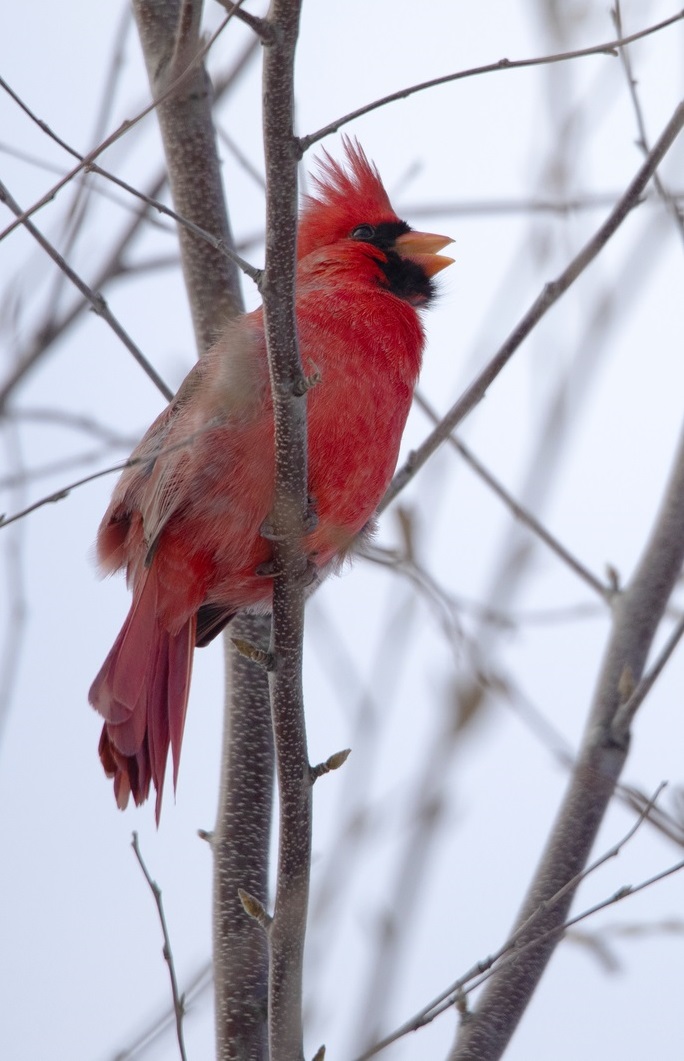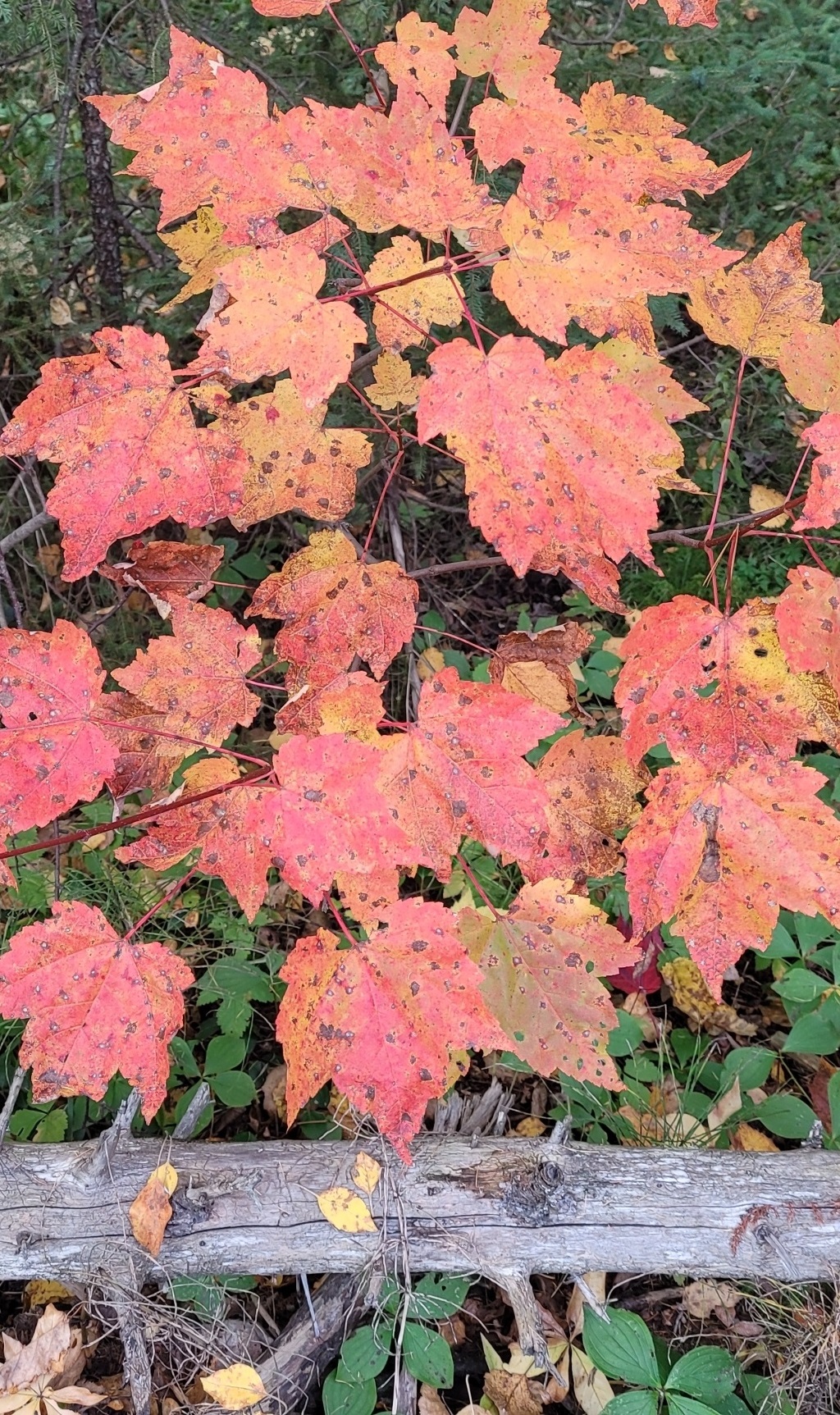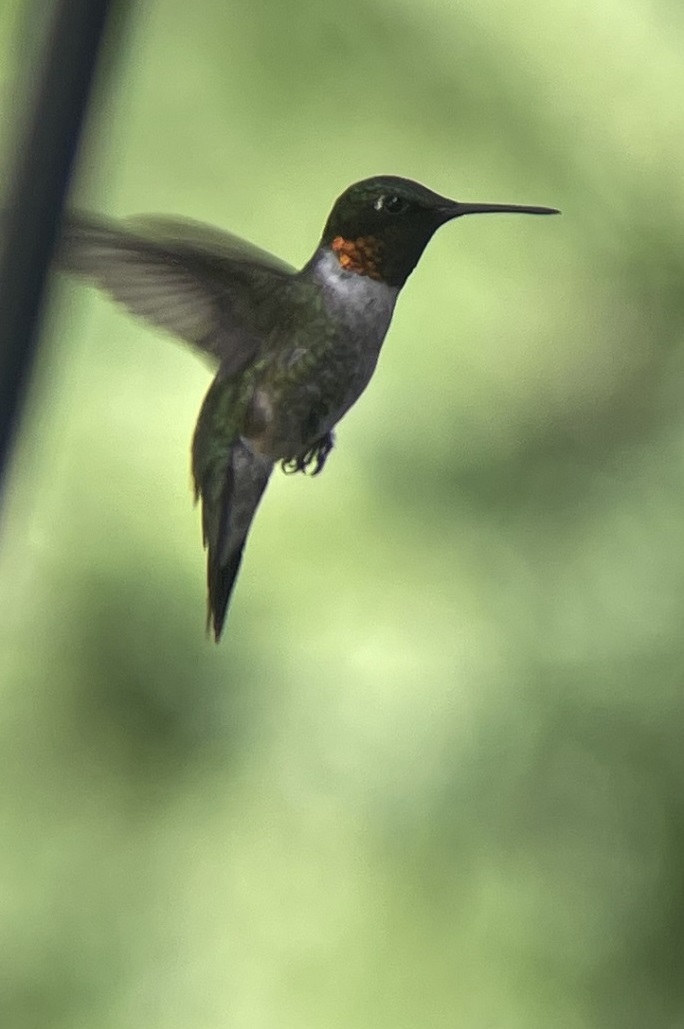Peek at journal entries by people noticing phenology around them.
When you take note of nature's calendar, by writing down your observations and wondering how it's all connected, you are thinking about phenology.
Below are seven examples of observers paying close attention to a plant or animal in their everyday environment over a period of weeks or months.
How to use this interactive page: Click an observation to reveal which phenophase(s) was (were) detected. A phenophase is an observable part of a plant or animal's life cycle. This website uses Nature's Notebook as the source for phenophase names and definitions.
Why use this interactive page: Some people are intimidated by the idea of phenophases. They may feel, for example, that their nature observations are ordinary and not important in terms of phenology. This page illustrates how simple it is to interpret what you see in terms of phenophases and become a phenologist in your own way.
Observation 1: Late in March, while walking through my yard, I heard an American robin.
Live individual: One or more individuals are seen or heard moving about or at rest.
Observation 2: About three weeks later, I saw a robin hopping across the grass. I noticed it pick up an insect in its bill and eat it.
Live individual: One or more individuals are seen or heard moving about or at rest.
Feeding: One or more individuals are seen feeding or foraging. If possible, record the name of the species or substance being eaten or describe it.
Insect consumption: One or more individuals are seen eating insects. If possible, record the name of the insect or describe it.
Observation 3: In April, I saw one male robin chase another male robin out of the yard.
Live individuals (two): One or more individuals are seen or heard moving about or at rest.
Territorial individuals: One or more individuals are seen or heard defending a territory. This may be indicated by calls or song used as part of a territorial proclamation, chasing of an individual of the same species from a breeding area (but do not confuse this with courtship behavior, which in some species may involve chasing), or calls or displays directed at individuals of the same or a different species to defend a feeding area.
Observation 4: Later in April, I heard a robin singing early in the morning. It was singing well before the sun was up!
Live individual: One or more individuals are seen or heard moving about or at rest.
Singing individual: One or more individuals are heard singing. Singing refers to stereotypical, simple or elaborate vocalizations (most commonly by males) used as part of territorial proclamation or defense, or mate attraction. It does not include relatively simple calls used for other forms of communication.
Observation 5: In April, I saw a male and female robin flying to an apple tree with nesting material in their beaks.
Live individuals (two): One or more individuals are seen or heard moving about or at rest.
Nest building: One or more adults are seen constructing a nest or carrying nesting material.
Observation 6: Four days after that, I watched as the female re-introduced materials that had fallen to the ground. I saw her use her wing to create a beautiful, bowl-shaped nest.
Live individuals: One or more individuals are seen or heard moving about or at rest.
Nest building: One or more adults are seen constructing a nest or carrying nesting material.
Observation 7: Nothing much seemed to happen for the next week. Each time I sat down to observe, I made reports using Nature's Notebook, even though I didn't see any robins.
Record effort in Nature's Notebook, even if no phenophases are observed
Observation 8: Then there she was. The female robin was sitting in the nest for extended periods of time.
Live individual: One or more individuals are seen or heard moving about or at rest.
Occupied nest: One or more adults are seen sitting on a nest, entering or leaving a nest site under circumstances indicating its use for nesting (including nest defense behavior), or live eggs or nestlings are seen in a nest.
Observation 1: During my first summer of retirement I was able to do a lot of kayaking. One of my first times out kayaking in late May, I saw two adult loons floating in the water on the far side of a small lake.
Live individuals (one): One or more individuals are seen or heard moving about or at rest.
Observation 2: A couple weeks later, while kayaking on the same lake in the Cayuna Recreation Area, I saw two adult loons again. One was making its all-too-familiar lonely sounding loon song.
Live individuals (two): One or more individuals are seen or heard moving about or at rest.
Calls or song: One or more individuals are heard calling or singing.
Territorial individual: One or more individuals are seen or heard defending a territory. This may be indicated by calls or song used as part of a territorial proclamation, chasing of an individual of the same species from a breeding area (but do not confuse this with courtship behavior, which in some species may involve chasing), or calls or displays directed at individuals of the same or a different species to defend a feeding area.
Observation 3: The following week, I saw each loon diving and coming up several yards away from where they entered the water. They were clearly looking for food.
Live individuals (two): One or more individuals are seen or heard moving about or at rest.
Feeding: One or more individuals are seen feeding or foraging. If possible, record the name of the species or substance being eaten or describe it.
Observation 4: On the Fourth of July, the water was higher than usual, letting me explore new areas. I abruptly stopped when I saw a loon sitting on a nest! I quickly but quietly paddled out of the area.
Live individuals (one): One or more individuals are seen or heard moving about or at rest.
Occupied nest: One or more adults are seen sitting on a nest, entering or leaving a nest site under circumstances indicating its use for nesting (including nest defense behavior), or live eggs or nestlings are seen in a nest.
Observation 5: About a month later, I went back kayaking with binoculars. At the same end of the lake where I saw the nest, I now saw two adults and one fuzzy little loon beside them.
Live individuals (three): One or more individuals are seen or heard moving about or at rest.
Downy young: One or more young are seen covered with fluffy down feathers and not yet any smooth contour feathers.
Observation 6: Excited by my last observation, I went back about five days later. The two adults were visible, this time near the other end of the lake. Using my binoculars, I looked and looked, but didn't see the young loon.
Live individuals (two): One or more individuals are seen or heard moving about or at rest.
One interpretation of this observation is that the young loon died. That is certainly possible, but more evidence is needed to be certain. Nature's Notebook guides people to record phenophases based on direct evidence only, not on absence or inference.
Observation 1: While taking regular walks with my elderly mother near her suburban home, we pass a natural border of lilac bushes. In mid-May, we noticed most of the bushes had open flowers (pale purple) as well as closed buds (deeper purple).
Open flowers View Phenophase Image
For the whole plant, at least half (50%) of the flower clusters have at least one open fresh flower. The lilac flower cluster is a grouping of many, small individual flowers. (This phenophase was previously called "First bloom".)
Observation 2: When we walked by a week and a half later, there were mostly open flowers and very few closed flowers. The bushes were looking beautiful!
Full flowering View Phenophase Image
For the whole plant, virtually all (95-100%) of the flower clusters no longer have any unopened flowers, but many of the flowers are still fresh and have not withered. (This phenophase was previously called "Full bloom".)
Observation 3: It was near the end of June before I got back for another visit. When we walked by the bushes, we were disappointed to see that the flowers were either withered or completely dried up.
End of flowering
For the whole plant, virtually all (95-100%) of the flowers have withered or dried up and the floral display has ended. (This phenophase was previously called "End of bloom".)
Observation 1: During summer vacation, Mom brought me to a park. We rode there on our double bike. There were lots of butterflies in the garden. Mom said they were monarchs.
Adults: One or more adults are seen or heard moving about or at rest.
Observation 2: Then I saw two butterflies stuck together. It made me laugh. My mom said that is how they made babies.
Adults: One or more adults are seen or heard moving about or at rest.
Mating: A male and female are seen coupled in a mating position, usually end to end. This can occur at rest or in flight.
Observation 3: We went back to the park later in the summer and Mom showed me something she called milkweed. On it was a funny yellow caterpillar with black stripes. I called it a bumblebee pillar. She said it was a monarch caterpillar.
Caterpillars: One or more caterpillars (larvae) are seen moving about or at rest. When seen on a plant, if possible, record the name of the plant or describe it. For Danaus plexippus, young caterpillars are pale green with a black head. Older caterpillars have two pairs of black tentacles and black, yellow and white stripes around their body.
Observation 4: School was going to start soon. Mom brought me to the park one last time. We saw a smashed bumblebee pillar on the bike path. It made me sad and I cried.
Dead caterpillars: One or more dead caterpillars are seen.
Observation 1: While shoveling my walk in the middle of March (hopefully for the last time), I saw a cardinal flitting through the bushes while making a chipping sound.
Live individuals (one): One or more individuals are seen or heard moving about or at rest.
Calls or song: One or more individuals are heard calling or singing.
Observation 2: At the beginning of April, while taking a walk with my dog, I heard a cardinal singing.
Live individuals (one): One or more individuals are seen or heard moving about or at rest.
Calls or song: One or more individuals are heard calling or singing.
Singing individuals: One or more individuals are heard singing. Singing refers to stereotypical, simple or elaborate vocalizations (most commonly by males) used as part of territorial proclamation or defense, or mate attraction. It does not include relatively simple calls used for other forms of communication.
Territorial individuals: One or more individuals are seen or heard defending a territory. This may be indicated by calls or song used as part of a territorial proclamation, chasing of an individual of the same species from a breeding area (but do not confuse this with courtship behavior, which in some species may involve chasing), or calls or displays directed at individuals of the same or a different species to defend a feeding area.
Observation 3: A week into June, I looked out the window and saw a male and female cardinal eating seeds.
Live individuals (two): One or more individuals are seen or heard moving about or at rest.
Feeding: One or more individuals are seen feeding or foraging. If possible, record the name of the species or substance being eaten or describe it.
Fruit/seed consumption: One or more individuals are seen eating the fleshy fruits, seeds, or cones of a plant. If possible, record the name of the plant or describe it.
Observation 4: I kept watching and saw something incredible! The male flew to a feeder, grabbed a sunflower seed heart, and fed it to the female.
Live individuals (two): One or more individuals are seen or heard moving about or at rest.
Feeding: One or more individuals are seen feeding or foraging. If possible, record the name of the species or substance being eaten or describe it.
Fruit/seed consumption: One or more individuals are seen eating the fleshy fruits, seeds, or cones of a plant. If possible, record the name of the plant or describe it.
Courtship: A male and female are seen near one another and are engaged in courtship behavior. Do not include male displays in the absence of a female.
Observation 5: About six weeks later, while I was weeding my garden, a male showed up with two juveniles and was feeding them.
Live individuals (three): One or more individuals are seen or heard moving about or at rest.
Feeding: One or more individuals are seen feeding or foraging. If possible, record the name of the species or substance being eaten or describe it in the comments field.
Fledged young: One or more young are seen recently departed from the nest. This includes young incapable of sustained flight and young which are still dependent on adults.
Observation 1: While walking to school in late March, I noticed a red maple along my route. Looking up, I noticed red, fuzzy looking flowers on its branches.
Flowers or flower buds: One or more fresh open or unopened flowers or flower buds are visible on the plant.
Open flowers: One or more open, fresh flowers are visible on the plant.
Observation 2: About a month later, while biking to school, I noticed a greyish brown powder on the trail under the tree. There was enough for my tires to leave a slight trail. I looked up and the flowers on the tree were still fresh.
Flowers or flower buds: One or more fresh open or unopened flowers or flower buds are visible on the plant.
Open flowers: One or more open, fresh flowers are visible on the plant.
Pollen release: One or more flowers on the plant release visible pollen grains when gently shaken or blown into your palm or onto a dark surface.
Observation 3: One of the last days of school at the end of May I noticed the same tree had a full canopy of leaves.
Leaves: One or more live, unfolded leaves are visible on the plant.
Observation 4: Near the beginning of October walking to school (this year was great because I am a senior), I noticed the leaves were starting to change into a beautiful red color.
Leaves: One or more live, unfolded leaves are visible on the plant.
Colored leaves: One or more leaves show some of their typical late-season color, or yellow or brown due to drought or other stresses.
Observation 5: Three weeks later, some red leaves were still attached, but many had fallen. I loved the "swoosh swoosh" sound as I shuffled through leaves on the paved path.
Falling leaves: One or more leaves with typical late-season color, or yellow or brown due to other stresses, are falling or have recently fallen from the plant.
How does one know that the 'Leaves' and 'Colored leaves' phenophases are not present? These phenophases ask the observer not to include fully dried or dead leaves that remain on the plant.
Observation 1: My workplace has a nice outdoor patio with a garden where I eat lunch. In mid-May, while eating lunch, I saw what I thought was a big bug flying around the garden. To my surprise, it was actually a ruby-throated hummingbird!
Live individuals (one): One or more individuals are seen or heard moving about or at rest.
Observation 2: The next day I noticed it again. I observed it fly, hover, and even stick its beak into flowers.
Live individuals (one): One or more individuals are seen or heard moving about or at rest.
Feeding: One or more individuals are seen feeding or foraging. If possible, record the name of the species or substance being eaten or describe it.
Flower visitation: One or more individuals are seen visiting flowers or flying from flower to flower. If possible, record the name of the plant or describe it.
Observation 3: Around the end of June, someone put up a hummingbird feeder. I saw one hummingbird chase another hummingbird away from the feeder several times. It made a strange chattering sound during the encounters.
Live individuals (two): One or more individuals are seen or heard moving about or at rest.
Calls or song: One or more individuals are heard calling or singing.
Territorial individuals: One or more individuals are seen or heard defending a territory. This may be indicated by calls or song used as part of a territorial proclamation, chasing of an individual of the same species from a breeding area (but do not confuse this with courtship behavior, which in some species may involve chasing), or calls or displays directed at individuals of the same or a different species to defend a feeding area.
Individuals at a feeding station: One or more individuals are seen visiting a feeder, feeding station, or food placed by a person.
Observation 4: In August I saw a hummingbird at the feeder, but it looked different to what I'm used to. It had gray streaking on its neck. I looked it up online and discovered it was a juvenile hummingbird.
Live individuals (one): One or more individuals are seen or heard moving about or at rest.
Individuals at a feeding station: One or more individuals are seen visiting a feeder, feeding station, or food placed by a person.
One interpretation of this observation is that the juvenile bird was recently fledged. That is certainly possible, but more evidence is needed to be certain. Nature's Notebook guides people to record phenophases based on direct evidence only, not inference.
Author: Jayme Hogan, Minnesota Master Naturalist
